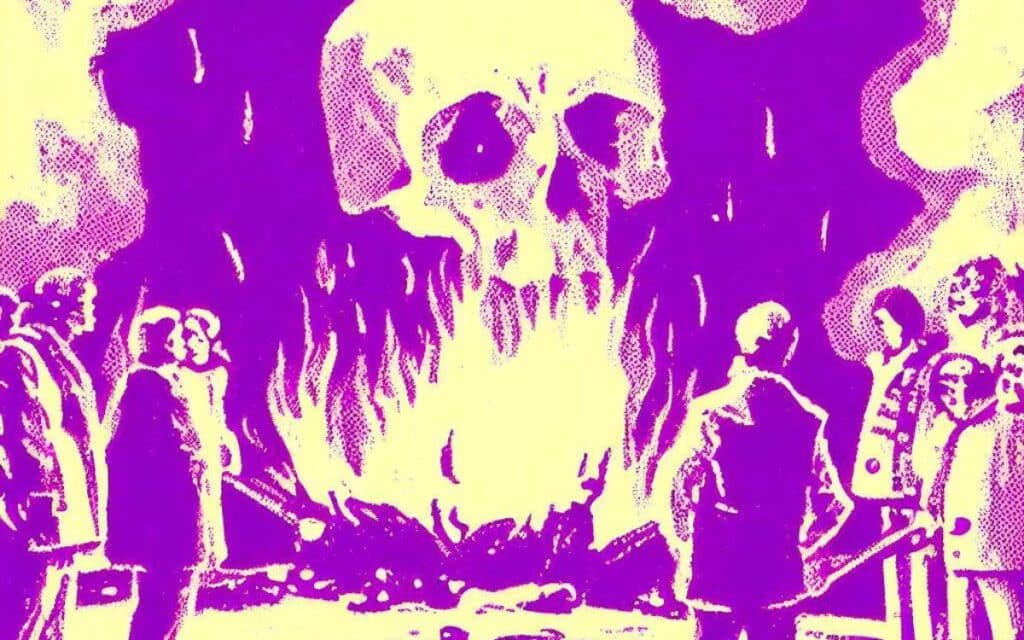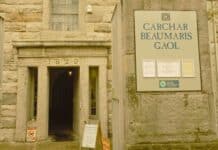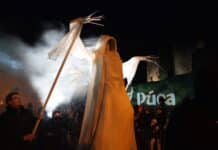Nos Galan Gaeaf, the Welsh equivalent to Halloween, is a night of ancient rituals and winter preparation, JON REES explains

Traditionally in Wales, winter would begin on 1 November, known as Calan Gaeaf, so the night before would be celebrated as Nos Galan Gaeaf.
It would be a spirit night (Ysbrydnos) where people would celebrate the harvest, with feasts and bonfires and preparing for the cold, dark winter.
The Welsh word for November is Tachwedd, which literally means “slaughtering”. November was the month when animals were slaughtered for the winter, so it is no wonder so many macabre traditions associated with death (and often featuring parts of dead animals) sprung up around the festival.
People also believed this night was when the links with the “otherworld” (traditionally known as Annwn) would be thinnest. They believed that spirits would walk abroad and would avoid crossroads and stiles. Though many of the traditions were also looking towards the future (particularly in matters of love).
Some of the traditions, dating back to the 9th century, would seem familiar to us in modern times.
Carved turnips would be placed at the side of roads containing candles to frighten passers by.
Bonfires at Welsh Halloween
Bonfires or Coelcerth would be held where there was dancing and celebration.
As darkness drew in, men would wear pig skins and take the role of the Hwch Ddu Gwta (the tailless black sow), sing the verse “Adref, adref am y cynta’, Hwch Ddu Gwta a gipio’r ola’” (Be sure you are the first at home, the tail-less black sow is sure to roam).
Or the longer version “Hwch Ddu Gwta a Ladi Wen heb ddim pen, Hwch Ddu Gwta a gipio’r ola’, Hwch Ddu Gwta nos G’langaea, Lladron yn dwad tan weu sana” (The black sow and headless white lady, Will try and catch the last to leave, Thieves abound knitting stockings, Beware the tail-less black sow on winter’s eve.)
The second song also features the Black Sow’s common companion in folk stories, “Y Ladi Wen”, a headless apparition of a woman in white who was said to lure travellers to misfortune (though in some parts of Wales she was said to be a good spirit, who would guard crossroads and graveyards from evil spirits).
As the above shows, dressing up has always been popular at Halloween.
Men would dress as gwrachod (a hag or witch), roaming villages and knocking on door for money or fruit and nuts, believing that doing so would repel evil spirits.
Predicting the Future on Nos Galan Gaeaf
Many people would try and predict the future, at the bonfires people would write their names on stones and cast them in the fire.
In the morning they would search for their stone and if it was missing it was said you would die within a year.
It was also believed that if you ran around the local church three times and peered through the keyhole you would see the faces of those soon to die.
Not all of the traditions associated with telling the future were so macabre.
It was believed if a single woman peeled an apple skin and throw it over her shoulder the shape it made on landing would be her true loves initial.
A similar tradition has if they walked around a church chanting (the slightly saucy) “here is the sheath where is the knife” they would hear the name of who they would marry.
Mari Lwyd at Halloween
And there is of course the famous Welsh tradition of the Mari Lwyd.
Traditionally associated with Christmas, it was a form of wassailing, where a horses skull would be mounted on a stick and someone would carry it around draped in a sackcloth, knocking on doors demanding admittance.
An exchange that could be compared to the traditional practice of flyting (or perhaps even a modern rap battle) would then take place, until the home owners lose, and when let in the Mari Lwyd would sing and dance until given food and drink.
In some parts of Glamorgan in South Wales, the tradition would be carried out on Nos Galan Gaeaf.
Do you celebrate any of these customs at Nos Galan Gaeaf in Wales? Tell us your thoughts in the comments section below!







